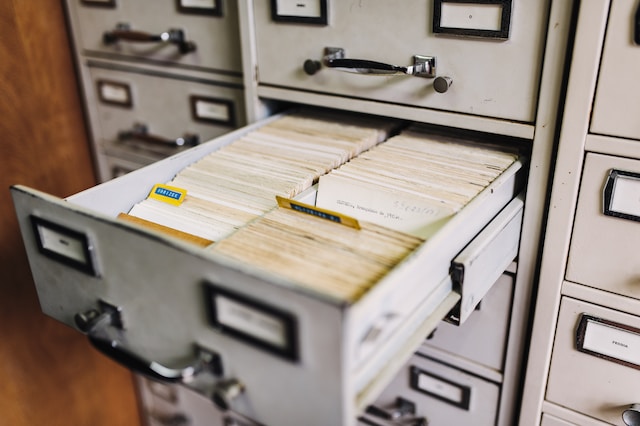Reusing equipment and materials prevents energy and pollution in manufacturing, importing, transporting, and selling new products. It can also help people in lower socio-economic circles afford needed items by lowering prices.
Reduced Waste
Whether in an office, home workspace, or elsewhere, filing cabinets are necessary for organizing important documents. But, if you don’t maintain clean, used office file cabinets regularly, paper-eating pests could dampen or ruin your kept files.
Luckily, cleaning your filing cabinet is easy with a quick dunk of warm water and mild detergent. Using this technique twice a year helps prevent mold and germ build-up and reduces the waste your office produces.
Even if your business has fully transitioned to a paperless operation, you can still help limit the amount of trash your organization contributes to local landfills by recycling and reusing office furniture instead of purchasing new items every time an employee leaves. Old metal filing cabinets, in particular, can be upcycled into various attractive structures that complement modern home designs.
Reduced Energy Consumption
Using recycled office furniture or equipment saves the energy to create new products. It also reduces the energy needed for mining and transporting new materials.
Recycling and reusing file cabinets is just one example of how reuse can save energy. Other items that can be repurposed include desks, chairs, and shelving units. They can also be donated to local charities or non-profits or repurposed by schools and cultural organizations for creative projects.
Another way to save energy is by reducing paper usage. This can be accomplished by printing on both sides of the paper, scanning documents, and utilizing electronic forms for timesheets and other paperwork. Using eco-friendly office furniture made from sustainably sourced materials and recycled products is also important.
Reduced Carbon Footprint
The carbon footprint of office furniture is the total amount of greenhouse gas emissions it produces throughout its life cycle. This includes raw material extraction, production, transportation, and disposal or recycling.
Many office furniture items, such as desks and filing cabinets, have a high embodied carbon. Businesses can significantly reduce their carbon footprint by reusing and upcycling these pieces.
Most discarded office furniture ends up in landfills, where it decomposes anaerobically to produce harmful greenhouse gases. When office furniture and equipment are donated or sold to a charity, non-profit organization, or local community, it avoids the disposal cost. It has the potential to provide financial assistance to those in need.
Reduced Hazards
Rather than throwing away office furniture, it can be donated to charities or reused elsewhere. This helps prevent the production of landfill waste. Landfill waste decomposes anaerobically, producing harmful greenhouse gases and leaching toxic chemicals into soil and water. It also consumes valuable landfill space.
Recycling used office file cabinets and other equipment keeps these materials out of landfills, where they contribute to toxic air emissions, resource depletion, environmental degradation, and chemical pollution. It also helps save energy and reduces the use of non-renewable resources.
Office furniture, office supplies, and computers that become obsolete can find new homes in schools, hospitals, offices, and non-profit organizations. Similarly, art supplies, lumber, and stage props can be reused for school or cultural organization creative projects. By increasing the use of double-sided printing and reducing paper usage, offices can help save on office supply costs as well as save trees and water resources. By using reusable coffee mugs and flatware, offices can reduce the need for disposable items.



